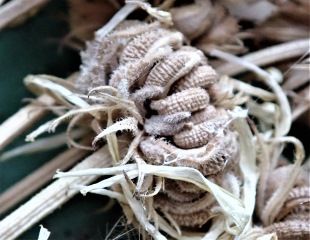
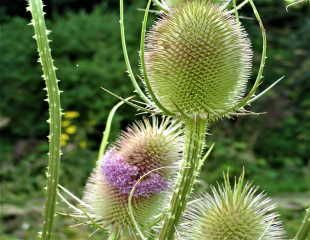
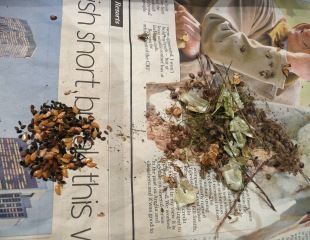
10 of the Best Self Seeding plants
There are a group of plants which self seed around the garden, with no effort by the gardener.
There are advantages to growing self seeding plants. It means you get new plants for free each year. Self seeding bulks up the garden stock of plants and it involves no effort. It is possible with some self seeding plants, to take the seed head when the seeds have formed, and shake it into the area of the garden you would like the self seeders to plant themselves and so have some control over where the self seeding plants grow.
There are also downsides. Some self seeders, such as Alchemilla mollis, are very vigorous and may self seed too much. This means to keep the plant in check, you must either cut off the flowers before they run to seed, or dig up unwanted plantlets. There is not a lot of control over where the seeds land and germinate, and you may not be happy with the haphazard planting by nature. Taking all this on board below are short descriptions of some of the best self seeding plants.
Eryngium
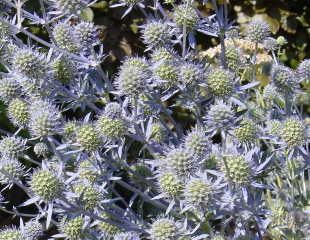
Eryngium is a perennial also known as Sea Holly, the best-known variety is 'Miss Wilmott's Ghost' is a relatively well-behaved self seeder. Much visited by bees, it is easy to grow and does best in dry conditions. Once established, it is drought resistant.
Alchemilla Mollis
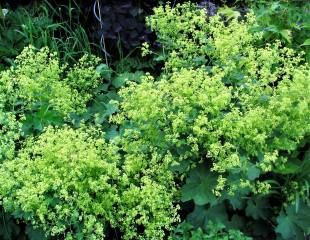
Alchemilla is also a perennial, common name Lady's Mantle. It has bright lime green flowers in the spring which fade to yellow over the summer. However, it is a thug, and tends to self seed everywhere, vigilance needed to pull out new unwanted seedlings.
Digitalis

Digitalis purpurea, the common foxglove, is a self seeding biennial. All varieties, not just the wild purple variety, will pop up around the garden. You can remove the tall flower (seed head) when spent, and split off the seeds to direct into a part of the garden where you would like Foxgloves to grow.
Calendula
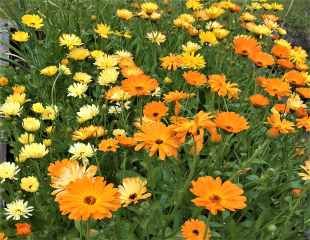
Calendula is an annual which will self seed itself or you can collect the large seeds (image far left above,) and seed where you want. It makes a lovely summer display and the flowers are edible, its common name being the English Pot Marigold.
Myosotis Sylvatica
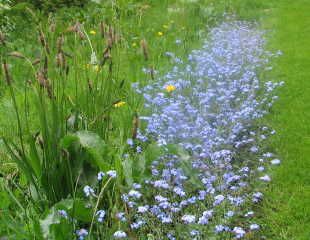
Myosotis Sylvatica is a biennial, common name for-get-me-not. It has a reputation for being a cottage garden plant, but it does put on an effortless early display of colour which sits well with spring bulbs.
Erigeron

A herbaceous perennial Erigeron, common name Mexican flea bane, has lovely delicate pink and white daisy flowers. It will grow in walls and crevices and is a long flowering summer perennial.
Stipa gigantea

Stipa Gigantea the giant oat grass along with other varieties of Stipa will self seed. It is a tall grass with tall plumes of delicate oat type flower heads. It will tolerate all types of soil and partial shade. The fluffy S. tenuissima will also self seed vigorously more about grasses.
Poppies
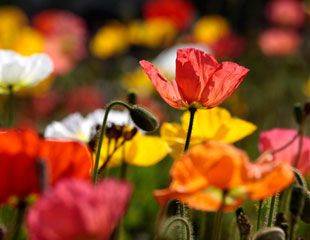
Poppies love to self seed and will add a splash of colour to the borders. Most types of poppies self seed and, like all self seeding plants, to prevent self seeding remove the flower heads early before they set seed.
Verbena

A great self seeder for the borders, Verbena is attractive to butterflies and pollinators.
As a tall perennial seedlings may need to be relocated to the back of the border.
Aquilegia vulgaris
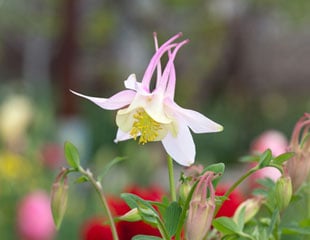
A spring flowering perennial, Aquilegia, common name Columbine, its seedlings appear all over the place. They are easily removed. You can also save the seed and raise plants. On the right of this image, the seed heads are forming.
Dipsacus fullonum

This is wild teasel considered by some to be a weed because of its propensity to self seed. But the birds love it for the seeds, especially Goldfinches. It is a biennial which can be vigorous but looks good in a semi wild setting.
Primula
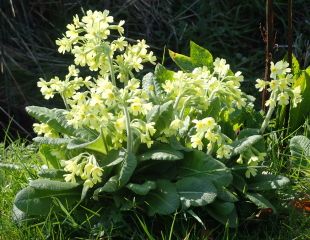
This is our native primrose, which will self seed to make clumps. Ideal in damp and shade conditions, primrose will colonise an area with their lovely delicate lemon coloured flowers. A source of early nectar.
